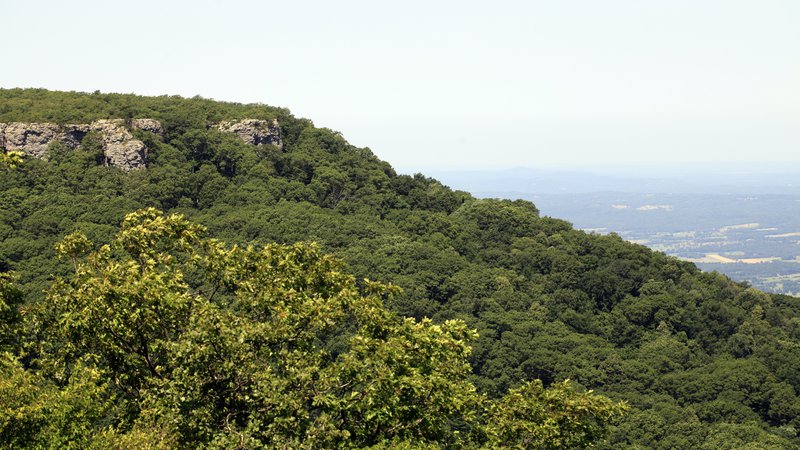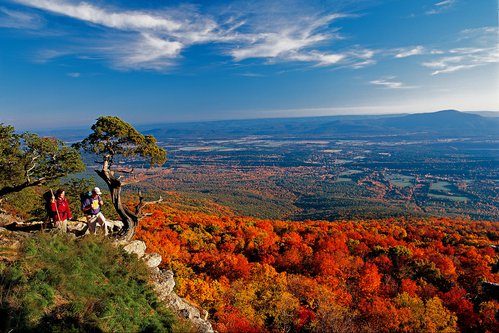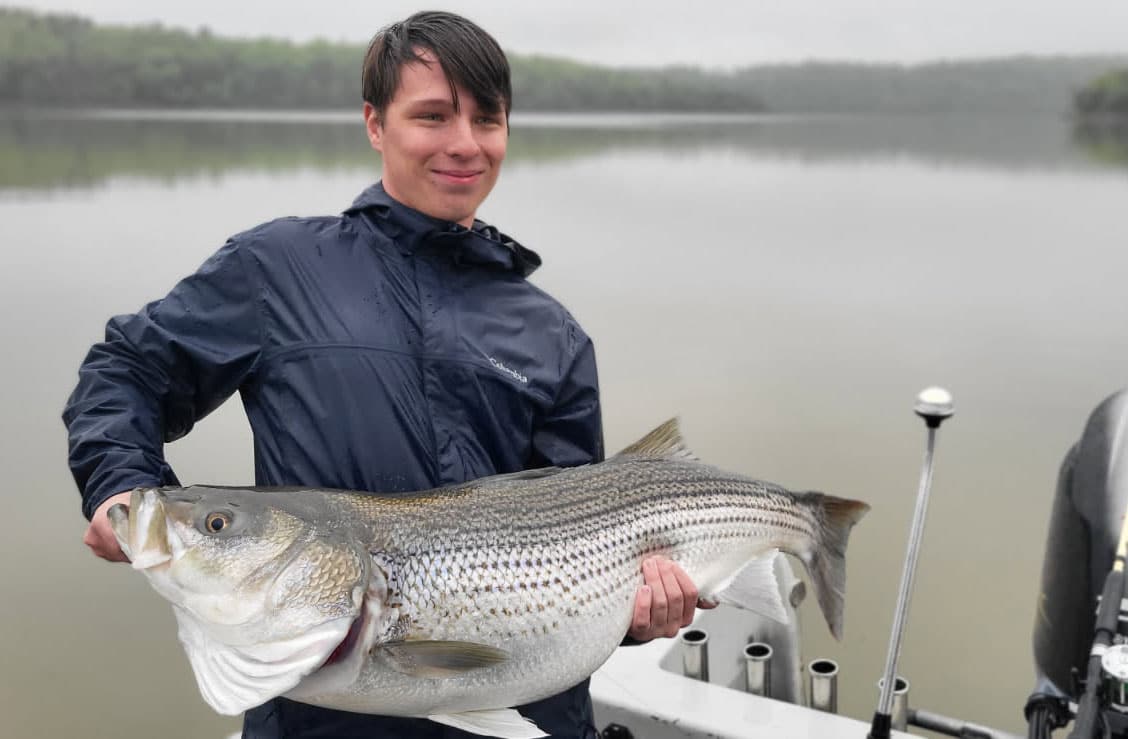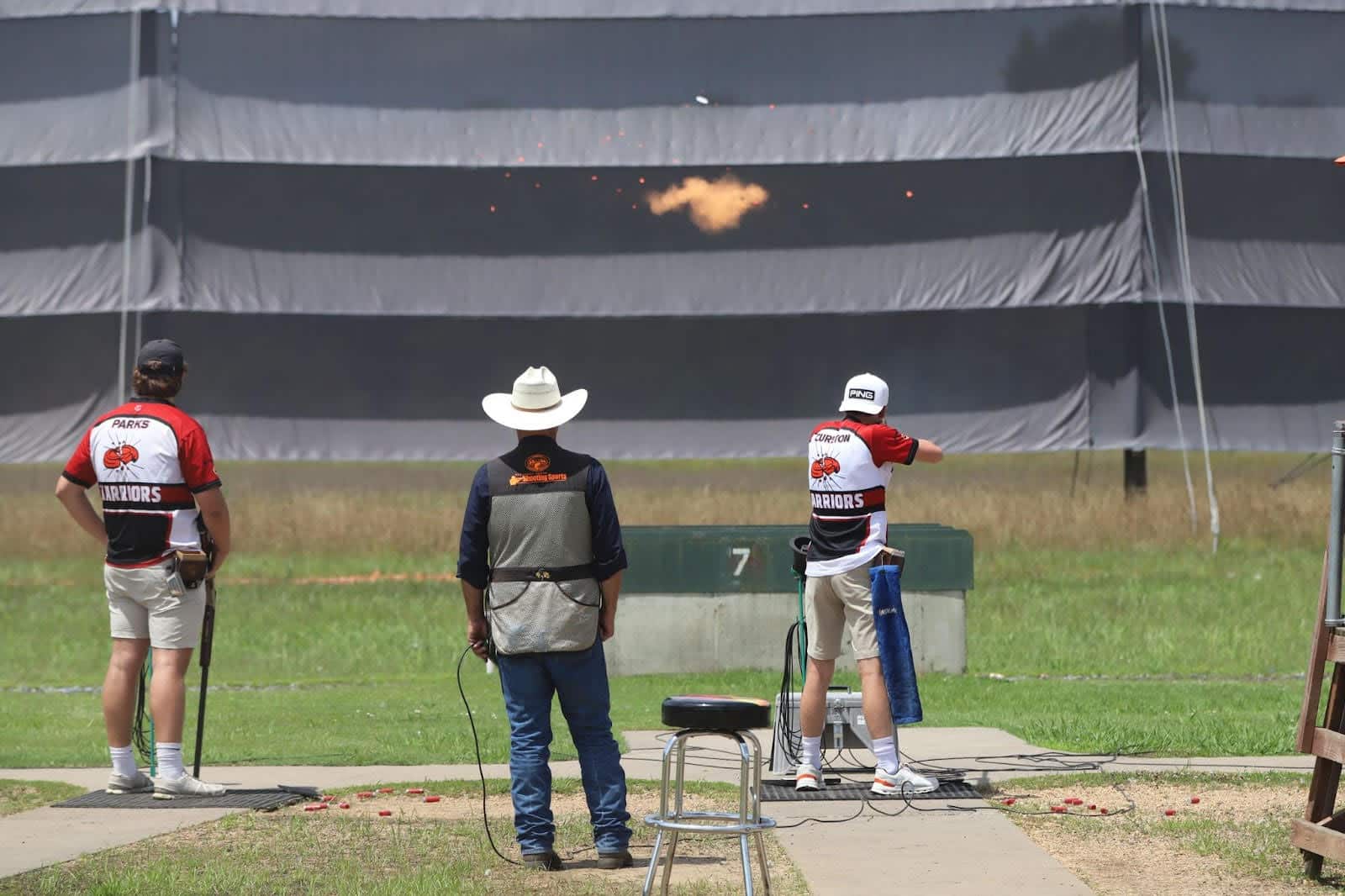Mount Magazine WMA is a little of everything
BY Jim Harris
ON 03-23-2022

March 23, 2022
Jim Harris
Managing Editor Arkansas Wildlife Magazine
PARIS, Arkansas – One Arkansas Game and Fish Commission wildlife management area is contained within a national forest and also has a portion serving as an Arkansas State Park. It features nearly every kind of popular game species and plenty of watchable nongame birds and animals, not to mention spectacular views and the highest point in all of the state. Mount Magazine WMA offers a getaway for the hunter, angler, wildlife watcher, hiker, casual driver or vacationer looking for a perfect weekend away.
It also features one of the most gorgeous stretches of highway in all of The Natural State. Arkansas Highway 309, running mostly northwest to southeast, cuts through the western third of Mount Magazine WMA and connects Paris, on the north end, with Havana on the south. Highway 309 is known as the Mount Magazine Scenic Byway. Paris and Havana are in valleys that sandwich Mount Magazine WMA. The WMA falls within the Ozark-St. Francis National Forest, overseen by the U.S. Forest Service.
“It looks like no place on the national forest,” Kevin Lynch, the AGFC’s regional supervisor based in Fort Smith and manager of Mount Magazine WMA, said. ”It has big flats and harsh drainage areas all across the area. Huckleberry Mountain and Rich Mountain are on the east end. The WMA is kind of between everything. The Arkansas River and the Petit Jean River had an effect on the geology. It’s so pretty. There are elements of both the Ozarks and the Ouachita national forests.”
The USFS entered into a cooperative agreement with the Arkansas Game and Fish Commission in 1975, similar to other arrangements around Arkansas where the AGFC manages the wildlife on federal lands, such as White Rock and Bearcat Hollow WMAs.
“A lot if these areas were already set up as deer refuges by the federal government for many years,” Lynch said. The longtime AGFC biologist also had much praise for the working relationship he’s had with the Mount Magazine Ranger Office in Paris over the years.
“The relationship (between USFS and AGFC) has been invaluable,” says Mindy Lawson, who was the Forest Service biologist in Paris for 10 years until retiring recently. “Kevin and I talk on a weekly basis, such as about projects like our native grass restoration area work.”
The WMA has extensive, gated food plots on the area to enhance wildlife habitat, especially for deer and turkey.
“Last year we treated the north side, about 135 plots, and this year some of those were plumb full of clover,” Lynch said. “We do a lot of plots. We have the area divided into north and south quadrants with wildlife openings. This past fall we hit 122 food plots on the south side cooperatively, Game and Fish and the Forest Service. … There are all kinds of (invasives) that get in these plots that we don’t need. We can’t do them all at once but we’ll do as much as we can.”
Mount Magazine is a turkey hunter’s dream destination, but can get crowded. A walk-in area offers more disturbance-free hunting during the season for those who want to put on their hiking shoes for a bird. Outside of the turkey hunting dates in mid-April to early May, the walk-in area has a closed gate from April 1 until June 1. “This is to reduce the disturbance, not just for turkeys but all wildlife, and hopefully provide a better quality hunt,” Lynch said. “It’s foot traffic only, no bicycles, a unique walk-in area.”
Next summer, 36 plots in the walk-in area at Huckleberry Mountain will be sprayed, and they’ll be planted in the fall, Lynch said.
When the Commission revitalized northern bobwhite restoration efforts four years ago, parts of Mount Magazine WMA became quail focus areas. Those areas have seen removal of cedars and mulching to create better habitat for quail; the money on cedar timber sales goes back into the ground, Lawson says, and the open canopy promotes hardwood seedlings. Native grasses have been planted, too. These areas also benefit deer, turkey and other species.
“We say we don’t plant the trees and grasses for the hunters, we do it for the wildlife, but they bring the hunters,” Lawson said.
Quail, which seemingly followed early setttlement on Mount Magazine as some parcels were cleared, persist on the WMA, Lynch said. “I’ve found birds all but one time I’ve gone up to that area. The quail are there. We hope more will colonize those areas.”
Another large area not actually included in the Quail Focus Areas is a 1,200-acre section being cooperatively developed by the AGFC and the USFS for quail restoration. Lynch says all of the funding will come from ongoing commercial sales of pine, some hardwood and cedars from the district. “The area is broken up into thirds and will be burned on a three-year rotation,” Lynch said. “The prescribed fire and other treatments are down the road, so full implementation is a few years out. It will provide good habitat for quail, turkey and more. It’s a Forest Service stewardship project. We call it the Calico Project; locals know it as Calico Mountain.”
Lynch says four to five bears on average are harvested each bear season. “It’s a closed canopy forest. There’s not a high density area, but they are there. You are not likely to see a bear when driving around like you would at White Rock.”
But those driving an automobile on Highway 309 are very likely to see deer, and maybe a turkey. Also, there is eagle spotting on Cove Lake on the north side, just out of Paris headed south. While there may be no nest sightings around the lake, Lynch says the region has “a high concentration eagle nesting area going to the Arkansas River.”
The rufous-crowned sparrow is unique to Magazine, Lawson said. Though Mount Magazine lacks the karst areas like in north Arkansas, bats will visit the area, including some long-eared bats, she said. Check for them on the top of the mountain in crevices. For visitors seeking the real small stuff, the shagreen snail (or Magazine Mountain middle-toothed snail) is endemic to the mountain, and is the first invertebrate ever removed from the federal endangered species list (it was listed as threatened in 1989 but its population recovered by 2013). Also, the orange-and-black American burying beetle is a resident, though it’s listed as threatened.
The WMA has two large lakes that are popular attractions in the warmer months. Cove Lake is the larger of the two and closer to Paris, just off Highway 309. It has hosted regular fishing derbies, including an annual Rotary Club event for 34 years, and is stocked with channel catfish, black bass, and has good crappie fishing. Spring Lake, on the southeast end, is mostly known for channel cats and redear. Cove Lake has paddle boat and kayak rental, and motorboats can access both lakes, though USFS rules prohibit speeds faster than 10 mph.
Horseback trails, hiking trails and more await the adventurer. There are 18 campsites available throughout the 120,000 acres. Then, there is the 2,234-acre state park area, which features Mount Magazine Lodge. When you enter the state park proper, however, no hunting is allowed.
You’re likely to be greeted by fog descending over the lodge at some point any day, but when it’s clear, the views are spectacular. Blue Mountain Lake and its WMA are easily visible to the south in the valley, along with the town of Havana. Vacancies in the lodge are often scarce in the usual vacationing months, though, so plan well ahead.
Just a few yards to the north of the resort is Signal Hill, which rises to 2,753 feet. Visitors will also note that the temperature at this point is some 10 degrees cooler (on average) than in Paris or Havana.
Recent News

Arkansas Wildlife Weekly Fishing Report
Apr. 24, 2025

Contenders take aim as shooting sports regionals begin
Apr. 23, 2025
Subscribe to Our Weekly Newsletter E-mails
Don’t miss another issue. Sign up now to receive the AGFC Wildlife Weekly Newsletter in your mailbox every Wednesday afternoon (Waterfowl Reports are published weekly during waterfowl season and periodically outside the season). Fishing Reports arrive on Thursdays. Fill in the following fields and hit submit. Thanks, and welcome!
